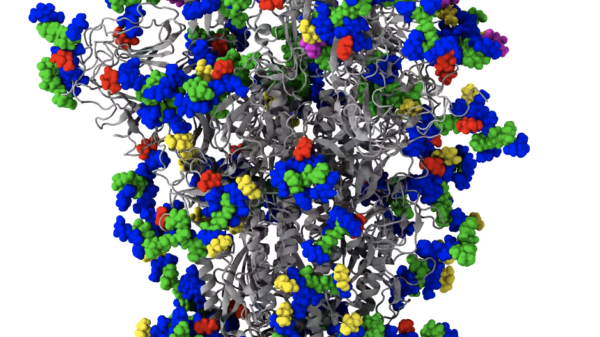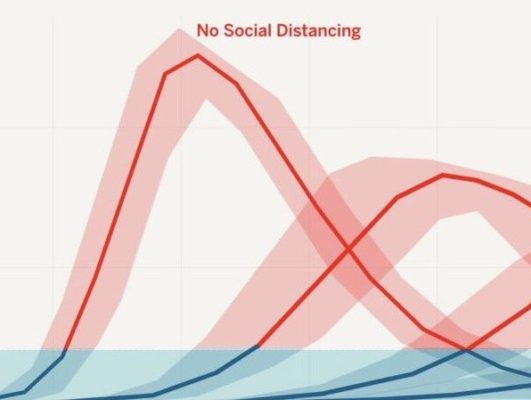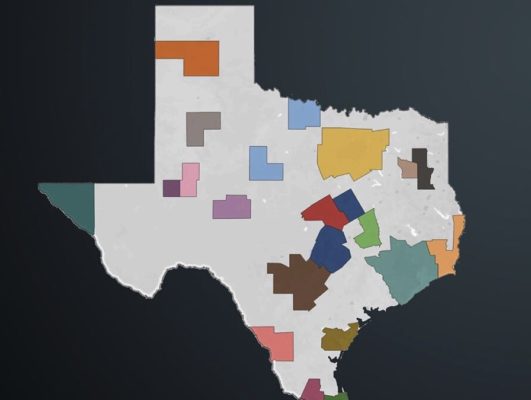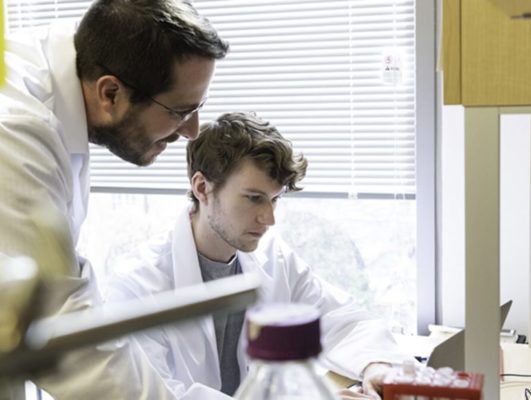In the battle against COVID-19, The University of Texas at Austin’s supercomputers are at the front lines.
Historically, the Texas Advanced Computing Center (TACC) has served the state when called upon, using resources such as Frontera — the world’s most powerful computing system on a university campus — to work on improved models for chemical attacks, Hurricane Harvey, the West Nile virus and swine flu.
Now, TACC has turned its efforts to stopping COVID-19. It’s an arms race to flatten the curve and TACC is providing the supercomputing power needed to better understand the virus and its spread, expose its underlying weaknesses, and ultimately, fight back.
Supercomputers are essential when trying to combat a pandemic quickly. Calculations or simulations that take regular computers days, months or even years to complete can be done by supercomputers in mere minutes or hours.

For example, TACC supercomputing resources were used to predict the speed of the coronavirus outbreak when it was first labeled as an epidemic. It aided a key study that swiftly discovered the virus spreads more quickly than anticipated and sometimes even before people have symptoms.
Even before COVID-19, the computing center was set up to help at a time of crisis.
TACC has an existing tool that uses supercomputers to optimize emergency health care response, the Texas Pandemic Flu Toolkit. It was first developed in 2012 in response to H1N1 swine flu and was created by a group of expert UT biologists, mathematicians, statisticians, engineers and computer scientists. This service simulates the spread of pandemic flu through the state, forecasts the number of hospitalizations, and determines where and when to place health care resources to maximize lives saved.
This new coronavirus will forever shape our approaches and our response to global pandemics.
TACC and Lauren Ancel Meyers, a professor of integrative biology and statistics and data sciences at UT Austin, have designed a new infrastructure specifically for COVID-19 analysis that will help the Texas health care system prepare a swift and targeted response. On March 31, Meyers and her team released modeling that predicts outcomes for the disease for 22 Texas cities depending on four scenarios for different levels of social distancing.
“The takeaway from this analysis is that the extent of social distancing measures and our willingness to adhere to them will directly impact not only the fate of the outbreak but also our capacity to provide life-saving health care for those in need,” said Meyers.
The new COVID-19 models, like the Texas Pandemic Flu Toolkit, are intended to both guide planning in advance of future pandemics and provide rapid analyses to support real-time decision-making during emergency situations.
Analysis shows social distancing measures will directly impact not only the fate of the outbreak but also our capacity to provide life-saving health care for those in need.
“This new coronavirus will forever shape our approaches and our response to global pandemics,” said Kelly Gaither, director of Health Analytics at TACC who is heading this undertaking. “Perhaps the most significant thing we can do is arm ourselves with the latest, most up-to-date information and use models to play out scenarios a priori, allowing us to respond in an informed way.”
The researchers expect this work to serve as a foundation for the development of a broader digital commons for the epidemiological research community, laying the foundation — from the models to the technical solutions — to solve future pandemic challenges.
In addition to improving outbreak preparedness for the state, TACC is using its ecosystem of supercomputers to accelerate the pace of coronavirus scientific discovery globally.
It was announced last week that TACC would join the COVID-19 High Performance Computing Consortium, a White House endorsed network of academic and industry leaders, federal agencies and national laboratories — all persevering for the same cause: to stop the virus and save lives.
U.S. scientists are currently working with TACC to create a massive computer model of the virus — 200 million atoms — that they expect will give insight into exactly how it infects the human body. This work builds on other past models also prepared with TACC, including atomic-scale influenza virus simulations.
Simulations at these levels are extremely complex and are massive in size, meaning they are just not feasible without high-power, high-speed systems.
Supercomputing resources such as those TACC provides enable researchers to think bigger and bolder, empowering them to run more detailed calculations and experiments at even faster rates.
“It’s a brilliant test of our methods and our abilities to adapt to new data and to get this up and running right off the fly,” said Rommie Amaro, professor at the University of California, San Diego and the researcher leading efforts to create the full model of COVID-19.

Amaro says that developing this full model will enable researchers to understand how the virus interacts with other important cellular components and functions, which she hopes will expose its vulnerabilities.
Immediately, this new information will aid in the design of novel drugs and vaccines, and long-term, researchers will better understand how the coronavirus subcategory of viruses (which includes SARS and MERS) infects in general.
Scientists have already taken the first steps, testing initial components of the simulation and optimizing the code as they race to halt the pandemic.
“TACC is proud to support this critical and groundbreaking research,” said Dan Stanzione, executive director of TACC. “We will continue to support simulations and other important work related to understanding and finding a way to defeat this new threat.”




